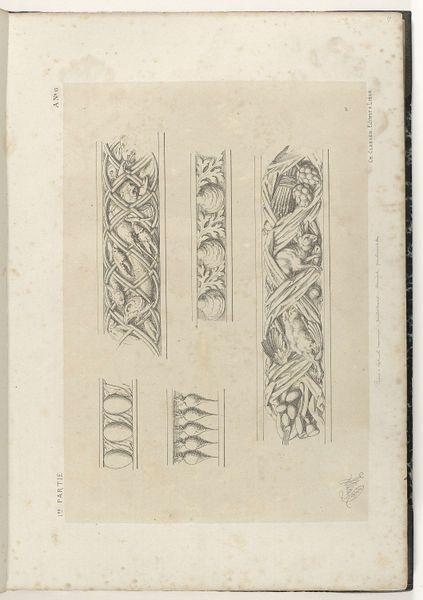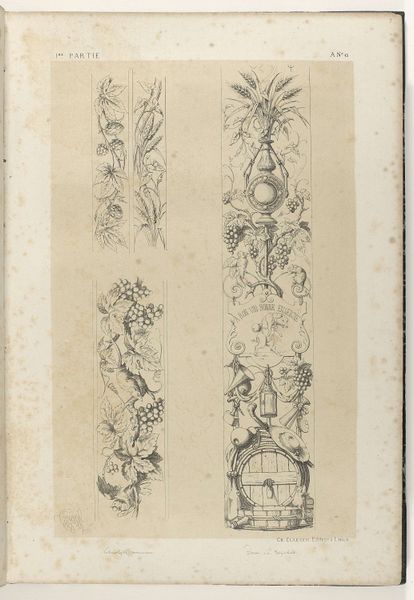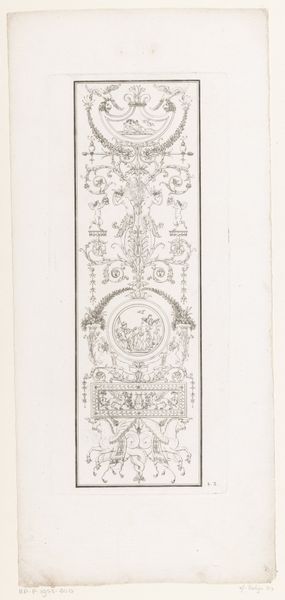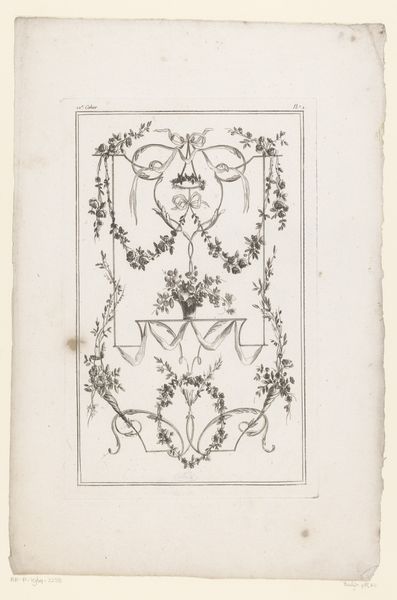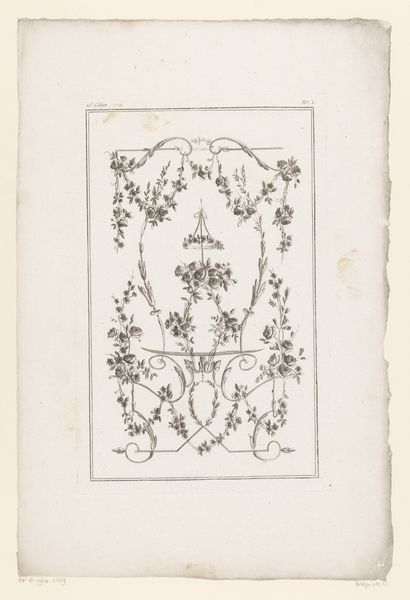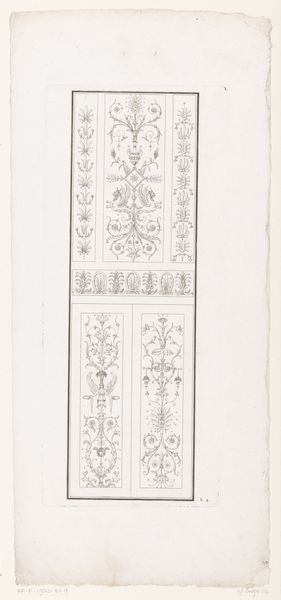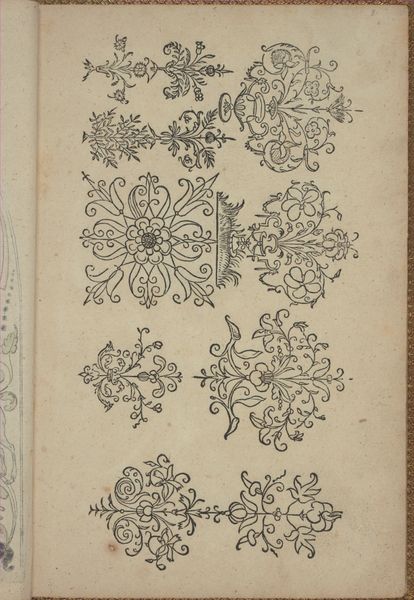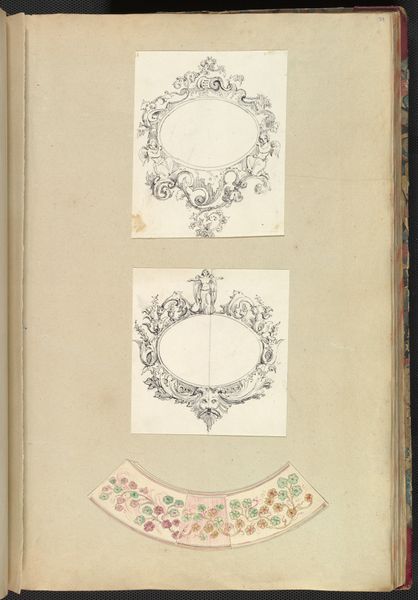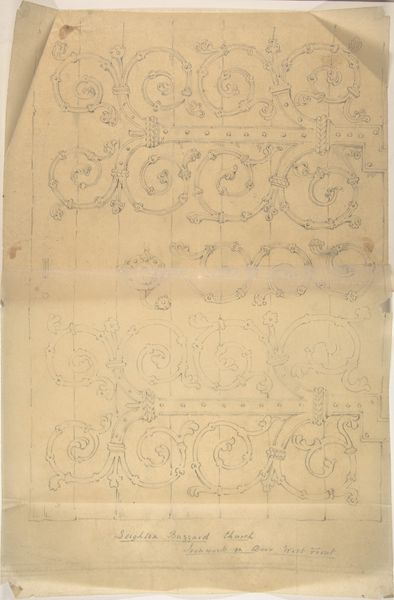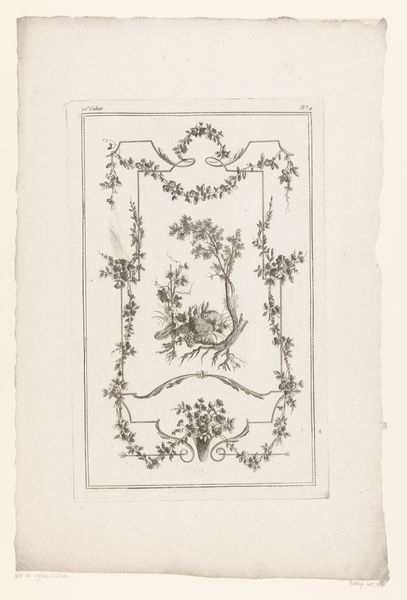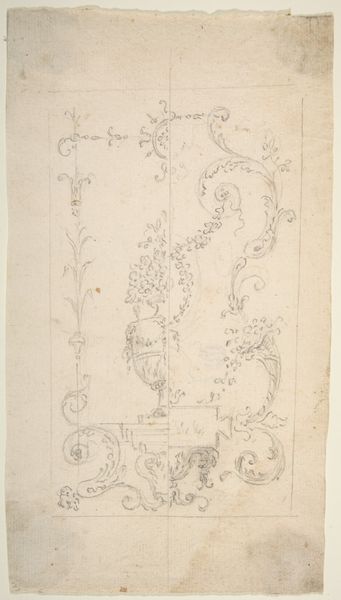
drawing, paper, ink, pen
#
drawing
#
comic strip sketch
#
aged paper
#
neoclassicism
#
old engraving style
#
hand drawn type
#
paper
#
personal sketchbook
#
ink
#
ink drawing experimentation
#
geometric
#
pen work
#
sketchbook drawing
#
pen
#
storyboard and sketchbook work
#
decorative-art
#
sketchbook art
Dimensions: height 218 mm, width 169 mm
Copyright: Rijks Museum: Open Domain
Curator: Borduurpatroon, or Embroidery Pattern, created by Pieter Bartholomeusz Barbiers between 1809 and 1837. It’s a drawing made with pen and ink on paper, currently held at the Rijksmuseum. I notice right away its rather simplistic style; it reminds me a bit of folk art. What strikes you initially? Editor: I agree; it does have a primitive charm! The geometric patterns are visually interesting, though. How do you interpret this work? Curator: This piece speaks to the hidden histories of craft and labor, especially that of women. Embroidery, often relegated to the domestic sphere, has historically been a crucial form of expression and even resistance for women. Consider how such patterns circulated – who created them, who used them, and what stories might they embody? We must consider, too, that Neoclassicism had a heavy influence at this time; therefore, how are the seemingly simple, almost naïve decorations in the patterns actually well considered artistic, even political choices? Editor: So you're saying that what might appear to be just a simple craft is, in reality, a record of the creative life and possibly a form of agency for women? Curator: Precisely! These patterns served practical functions and also preserved and transmitted cultural knowledge and personal expression. And remember that drawings were often considered a lesser artform. Bringing drawings out from the background calls attention to marginalized creativity and ingenuity, pushing us to rethink our assumptions about artistic skill, labor, and worth. Editor: That's a fascinating perspective. It makes me look at the piece in a whole new light – no longer just seeing it as an antiquated pattern, but as an understated representation of everyday existence and women's hidden work. Curator: Exactly! By engaging with these works, we can see connections across different historical contexts, highlighting the continuity of certain creative and resistant acts.
Comments
No comments
Be the first to comment and join the conversation on the ultimate creative platform.
